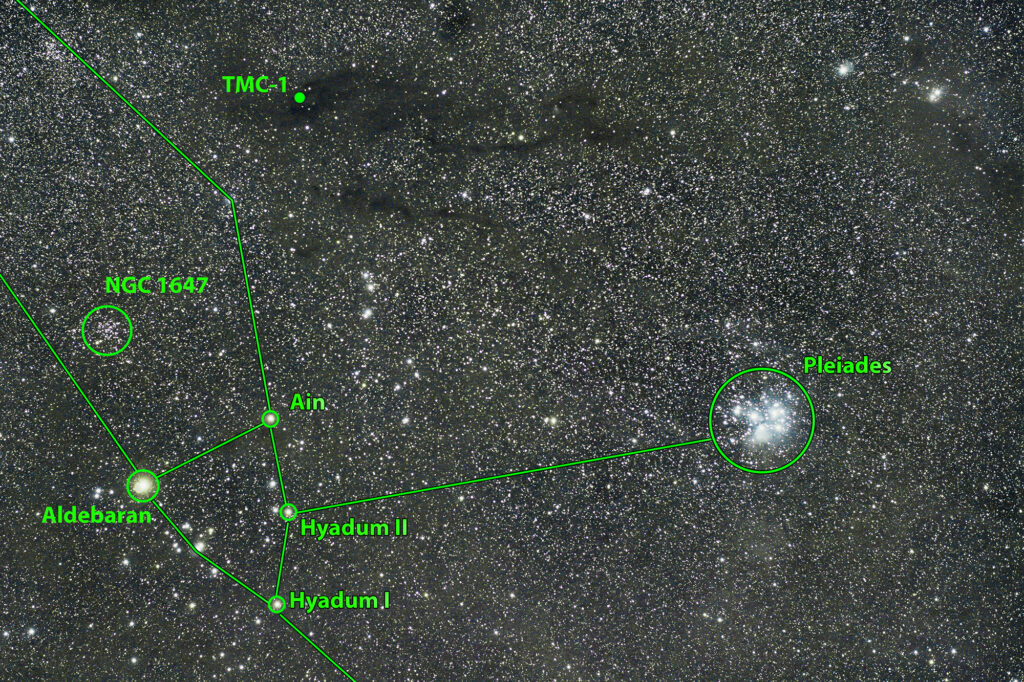
In a groundbreaking study, researchers from the Massachusetts Institute of Technology (MIT) have identified more than 100 distinct molecules within the Taurus Molecular Cloud-1 (TMC-1), marking the highest number of molecules ever detected in an interstellar cloud. Utilizing advanced radio telescopes, the team captured faint signals across a broad spectrum of electromagnetic wavelengths.
The discovery was made possible through over 1,400 hours of observation using the Green Bank Telescope (GBT) in West Virginia, the largest fully steerable radio telescope globally. Under the guidance of Brett McGuire, the research team collected and analyzed astronomical data, which has now been made publicly accessible. Their findings, published in The Astrophysical Journal Supplement Series, detail a census of 102 molecules in TMC-1, a cold interstellar cloud known for birthing sunlike stars.
Unveiling the Chemical Diversity of TMC-1
Most of the molecules identified are hydrocarbons and nitrogen-rich compounds, differing significantly from the oxygen-rich molecules typically found around star-forming regions. Among the notable discoveries are 10 aromatic molecules, which consist of ring-shaped carbon structures and represent a small yet significant fraction of the cloud’s carbon content.
Ci Xue, a postdoctoral researcher in the McGuire Group and the project’s principal investigator, emphasized the significance of the study.
“This project represents the single largest amount of telescope time for a molecular line survey that has been reduced and publicly released to date, enabling the community to pursue discoveries such as biologically relevant organic matter,” said Xue. “This molecular census offers a new benchmark for the initial chemical conditions for the formation of stars and planets.”
Advanced Techniques and Implications for Future Research
To manage the extensive dataset, the researchers developed an automated system for organizing and analyzing the results. By applying advanced statistical methods, they quantified the presence of each molecule, including isotopic variations such as carbon-13 and deuterium.
Brett McGuire, the Class of 1943 Career Development Associate Professor of Chemistry, highlighted the broader implications of the data.
“The data we’re releasing here are the culmination of more than 1,400 hours of observational time on the GBT, one of the NSF’s premier radio telescopes,” McGuire noted. “In 2021, these data led to the discovery of individual PAH molecules in space for the first time, answering a three-decade-old mystery dating back to the 1980s. In the following years, many more and larger PAHs have been discovered in these data, showing that there is indeed a vast and varied reservoir of this reactive organic carbon present at the earliest stages of star and planet formation.”
Opening New Frontiers in Astrophysical Research
The release of this dataset marks the largest publicly available molecular line survey to date, offering unprecedented opportunities for the scientific community to explore biologically relevant molecules. This comprehensive molecular census provides a new standard for understanding the chemical environments that precede star and planet formation.
Looking ahead, the research team is optimistic about the potential for further discoveries.
“There is still so much more science, and so many new molecular discoveries, to be made with these data, but our team feels strongly that datasets like this should be opened to the scientific community, which is why we’re releasing the fully calibrated, reduced, science-ready product freely for anyone to use,” McGuire stated.
As the scientific community delves into this rich dataset, the findings from the Taurus Molecular Cloud-1 study are poised to reshape our understanding of the universe’s chemical complexity and the processes that lead to the formation of stars and planets.






